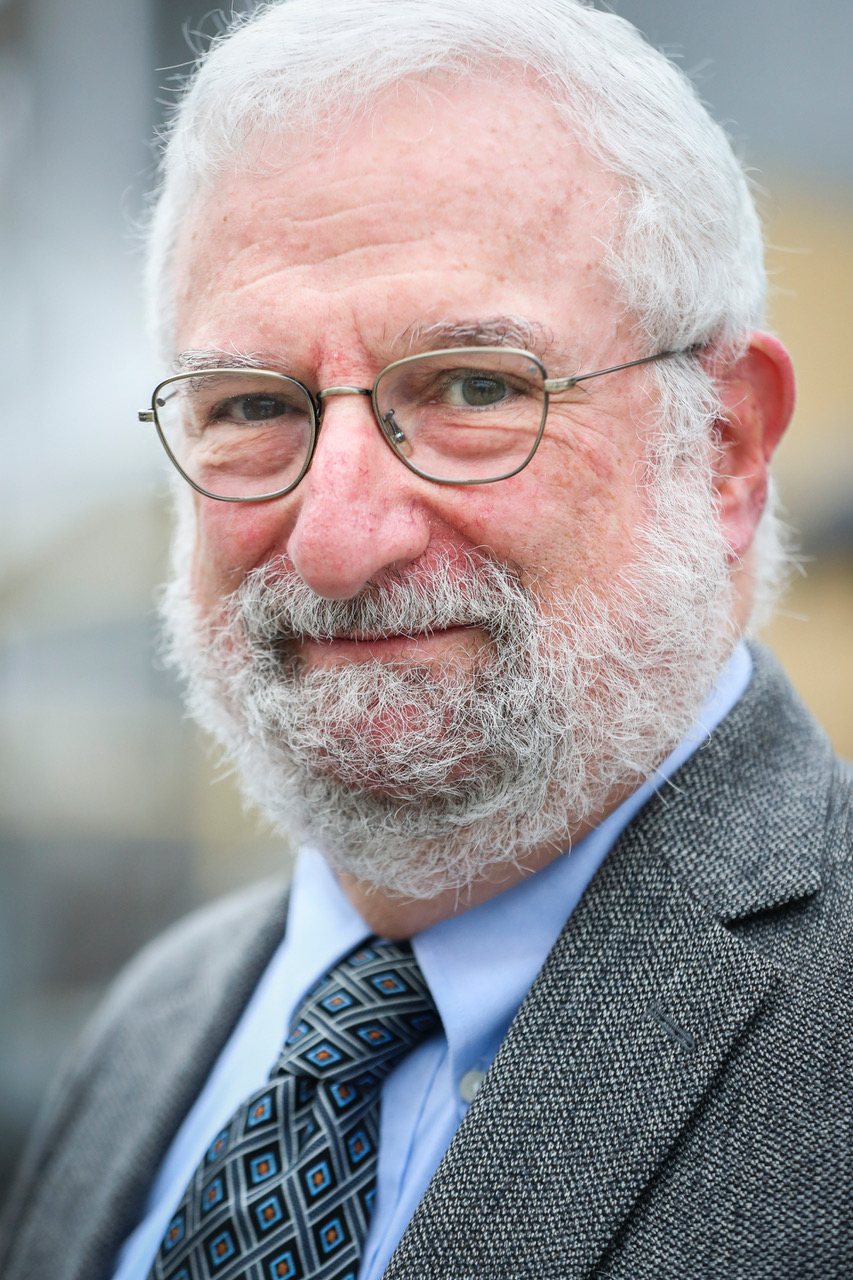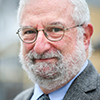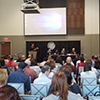
Sophia Germer
How did it go in New Orleans?” I’ve been asked that a lot recently, during breaks in Zoom meetings, via email, and in the occasional in-person gatherings that have started to dot my calendar. I am pleased to report that it—the 2022 annual meeting—went well. But what does that mean, and what does it imply for the future?
It does not mean that our attendance was anything close to normal. At the end of December, registration stood at 1,854, but actual attendance in New Orleans came in at 908 (based on the number of badges picked up). Approximately 1,000 historians changed their minds, and based on the timing of email requests to move panels online, along with data on hotel cancelations, we can confidently surmise that the Omicron variant outbreak in December tipped the scales, quite reasonably, for many of our colleagues.
So why do I say it went well? With full information about health and safety conditions, policies, and practices—which included proof of vaccination, required masking, and a testing station on the premises—908 historians decided they wanted to convene in person. Through conversations on the final day and subsequent email, we can readily infer that people enjoyed the conference and found it professionally rewarding as well.
This was clearly a self-selecting group, akin perhaps to people who decide to eat indoors at restaurants in Washington, DC (with proof of vaccination required, as in New Orleans restaurants), or who take trains or airplanes to destinations far from home. After attending a few conferences last fall, I wrote in the AHA’s Fortnightly News, “Attendance at each meeting was skewed towards people who thrive in conference environments. The generally high levels of enthusiasm, and the extraordinarily positive subsequent commentaries must be understood with that skewed sample in mind. Nevertheless, I was struck by the levels of energy, collegiality, and generosity at both conferences. ‘Generosity’ in the sense that people were patient, readily understanding that association and hotel staff were doing their best in a different environment.” This was precisely what I observed in New Orleans as well. At the orientation sessions for students, I suggested they might have a unique opportunity: the annual meeting has a reputation for being large and impersonal, the flip side of the coin that gives our discipline topical breadth and professional diversity; this would be a chance to take advantage of those virtues without the intimidation factor of vast numbers. On Sunday, more than a few students caught me to observe that this was exactly their experience.
People enjoyed the conference and found it professionally rewarding as well.
Do I wish attendance had been larger? Of course, and I’m sure our exhibitors did as well. No doubt panelists on the 165 sessions would have preferred more intimate settings that didn’t install them on platforms at a distance from an audience seated farther apart from one another than usual and wearing masks. The plenaries and presidential address drew respectable audiences, but with only one-fourth the normal turnout. Receptions were well attended, especially the graduate student gathering, but there were fewer such events than usual. Diminished attendance and hotel-room bookings have financial implications, of course, though negotiations with the hotels were able to mitigate those somewhat. (We approached the hotels as business partners and were able to share the COVID-induced damage, as have other effective collaborators in various environments over the past two years.)
An equally important mitigation piece of this puzzle relates to the program itself. While the rapid entrance and spread of Omicron upset our applecart rather quickly, it was hardly a surprise. We had already arranged online opportunities for participants wary of travel, and while expanding that online component on short notice required heroic staff effort led by meetings manager Debbie Ann Doyle, the capacity existed. AHA22 Online on February 21 to 27 includes 209 sessions and 19 posters, along with a “virtual exhibit hall.” Sessions are recorded and available through June, and registrations will be accepted until the recordings are removed. But making things work in New Orleans and providing participation opportunities for colleagues unable to attend in person compose only two-thirds of the equation occupying our thoughts now. We also must consider what we’ve learned over the past two years and what that means going forward, for both in-person meetings and online programming.
As everyone reading this publication knows, learning requires gathering information, reflecting on it, and drawing conclusions after careful consideration. We’ve been experimenting; like many other organizations, we’ve discovered that we have an audience for online programming. We’ve also learned a bit about what works and what doesn’t work online, as well as what kinds of questions to ask in making those assessments. While it’s not clear how much time historians—or anyone else—will want to spend watching people speak from squares on a screen, or participating in conversations under such conditions once they can freely interact face-to-face, we can surmise that many people have found such events rewarding and even enjoyable. Some people even prefer them, for reasons that include requisite factors of time, money, and accessibility. So the question is not whether to continue online programming but what meets the needs of our members, what we can provide, and how it will work.
The question is not whether to continue online programming but what meets the needs of our members, what we can provide, and how it will work.
Throughout the next year, through discussions with the AHA Council and committees, surveys of members, continuing conversations with other historians and various vendors, and consultation with peer associations, AHA staff will gather information about what historians would like to see available online, and then explore logistical feasibility, cost, staff time, and other variables to create new programming that builds on 2020–21’s Virtual AHA and on this year’s in-person and online conferences. We welcome all suggestions by email to AHAOnline@historians.org but cannot guarantee implementation: many good, creative ideas are just not possible given limitations of cost, staffing, and technology. What is possible for a small organization might not be workable for the AHA. What works well for a much larger or better-resourced organization is not always possible for us. We cannot satisfy everyone. What we can do is to welcome and consider opportunities to increase access to conversation, collaboration, communication, and community. Online programming invites participation from people who cannot travel to our annual meeting for reasons of time, money, physical restrictions, family constraints, and other concerns.
We will begin with an online event in summer 2023 to complement our annual meeting in Philadelphia from January 5 to 8. We don’t yet know precisely how it will work; we’ve learned that it is neither possible nor desirable to replicate an in-person gathering in an online space. Not only do some things not translate, but there are also opportunities online that are impossible in person. A digital publication has all sorts of capabilities well beyond a simple PDF version of printed text—different epistemological potential as well as bells and whistles. So, too, an online conference vis-à-vis an in-person gathering: different notions of time, space, communication, and more. Let’s begin to experiment with how we might take advantage of those differences. Given our resources and time frames, we might start modestly and then expand, keeping in mind how this new programming can interact with the in-person annual meeting. The AHA annual meeting itself already looks very different from meetings convened a decade ago. We expect it will continue a gradual transformation, taking into consideration complementary online gatherings, changes in institutional travel funding, and ecological commitments. The two gatherings will be different but related events, with different purposes, different application calendars, and different program committees.
Later this year, we will announce a call for proposals for the summer 2023 online event. Until then, we welcome your input and thank our members for their patience as we consider how best to take advantage of new opportunities.
James Grossman is executive director of the AHA. He tweets @JimGrossmanAHA.
Tags: AHA Online Annual Meeting 2022 Annual Meeting From the Executive Director

This work is licensed under a Creative Commons Attribution-NonCommercial-NoDerivatives 4.0 International License. Attribution must provide author name, article title, Perspectives on History, date of publication, and a link to this page. This license applies only to the article, not to text or images used here by permission.
The American Historical Association welcomes comments in the discussion area below, at AHA Communities, and in letters to the editor. Please read our commenting and letters policy before submitting.
Comment
Please read our commenting and letters policy before submitting.










